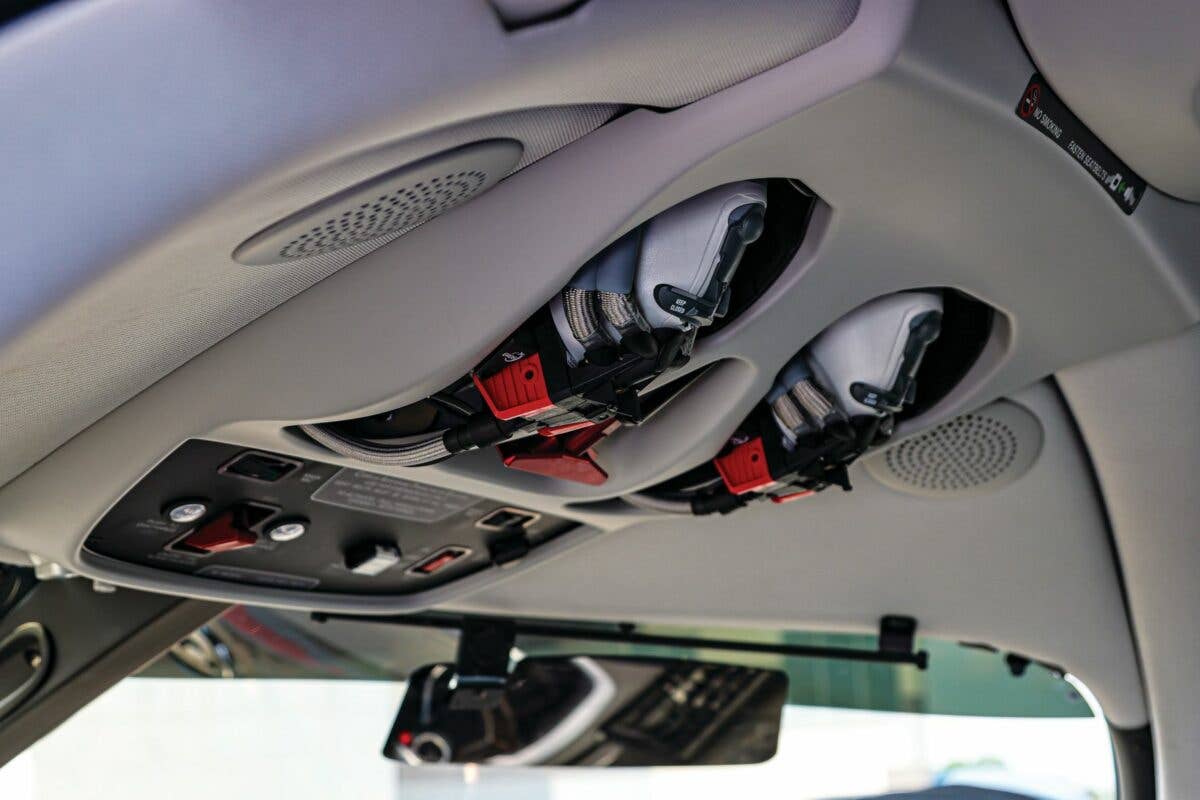FAA Issues AD on Vision Jet for CAPS Autopilot Function
The autopilot improperly engaged as a part of an automated process that precedes a deployment of the Cirrus Airframe Parachute System.

The CAPS on the SF50 requires the jet to slow below 130 knots indicated prior to deploying. [Credit: Stephen Yeates]
On March 6, the FAA issued an airworthiness directive (AD) final ruling, AD 2023-04-20, regarding the autopilot system on the Cirrus SF50 Vision Jet.
The AD encapsulated a previous service bulletin issued by Cirrus Aircraft Company on January 20, SB5X-90-14R1, following an inflight event in which the autopilot system improperly engaged as a part of an automated process that precedes a deployment of the Cirrus Airframe Parachute System (CAPS).
The CAPS was not improperly actuated in any of the events noted by the company or the agency. In one instance, the pilot deployed CAPS following the departure from controlled flight.
According to the text of the AD, “The FAA received a report that a Cirrus Model SF50 airplane was involved in an accident in which multiple flight control issues occurred after takeoff, causing the pilot to manually deploy the CAPS parachute. The FAA has no data showing the pilot received any crew alert system (CAS) messages indicating a CAPS autopilot malfunction. It was determined that the uncommanded activation of the CAPS autopilot mode contributed to the accident.
“It was also determined that corrosion in the CAPS power timer circuit (part of the CAPS autopilot control mode circuit) may have provided an erroneous signal to the CAPS control box, inadvertently activating the CAPS autopilot mode. The FAA received several additional reports of corrosion on the CAPS power timer circuits on Cirrus Model SF50 airplanes.”
The AD provides for implementing the SB instructions along with a process for the pilot/owner to update the aircraft flight manual and placards accordingly. Those SB procedures include “booting the avionics in configuration mode, inhibiting the CAPS autopilot, fabricating and installing information placards, and revising the AFM. For certain airplanes, the service information also provides procedures for modifying the wiring to remove the CAPS power timer functionality.”
The CAPS Sequence in the Vision Jet
FLYING spoke with Cirrus SF50 program manager Matt Bergwall to understand what was happening, and he reviewed the procedure for initiating a CAPS deployment in the Vision Jet—which differs from that deployment in the SR series because the jet may be traveling at a much faster speed when the pilot pulls the trigger on the system.
Therefore, in the jet, if you pull the handle, the autopilot takes over at first, slowing the airplane to 130 knots before deploying the chute. Also, said Bergwall, there is a timer box that’s associated with the CAPS that keeps a little bit of power on standby in case the pilot turns off the aircraft battery system during the emergency.
According to Cirrus, it was discovered that the card actually became corroded in some instances and activated the autopilot for the CAPS system. So, it’s not a CAPS fault—the chute is not going to deploy, he said, but it became an autopilot issue—and one that the pilot can handle by disconnecting the autopilot normally with the AP button.
Bergwall confirmed that of the more than 400 SF50s in the field, at least half of the fleet has already complied with the service bulletin, and most of the field will be taken care of shortly.
Without the timer card—the “fix” in the AD—for CAPS deployment, the pilot will have to slow the airplane down manually.
Eventually, Bergwall said, Cirrus will have a fix that’s an overall design change that customers can take care of during their scheduled maintenance periods.

Subscribe to Our Newsletter
Get the latest FLYING stories delivered directly to your inbox






